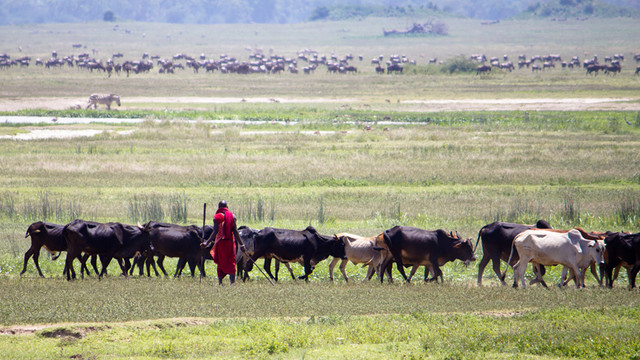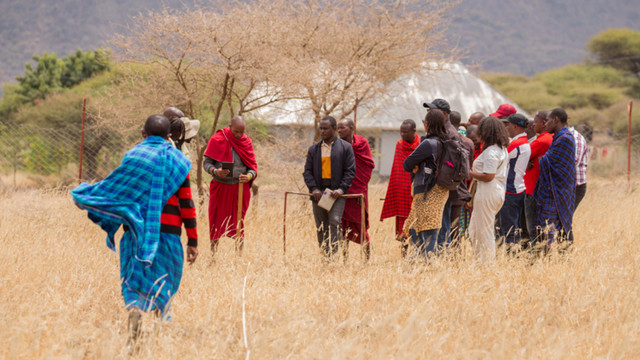Q&A: CBA15 innovation theme highlights transformative change
This year’s International Conference on Community-Based Adaptation (CBA15) has a new theme: innovation for adaptation. Here Chris Henderson and Susan Nanduddu explain why innovation is needed and preview some of the sessions on offer.

 Innovation for adaptation will be one of the five themes at the 15th International Conference on Community-based Adaptation (CBA15) taking place online from 14-18 June 2021.
Innovation for adaptation will be one of the five themes at the 15th International Conference on Community-based Adaptation (CBA15) taking place online from 14-18 June 2021.
Chris Henderson (CH), senior policy and practice advisor in agriculture at Practical Action, and Susan Nanduddu (SN), executive director at the African Center for Trade and Development, based in Uganda, are leading this theme at this conference. We talked to them about how innovation can contribute to positive change.
Q: Why is innovation important?
CH: There are already many good examples of community-based adaptation (CBA) that highlight what needs to be done, what can be done, and how to do it.
The issue we are facing is an overall lack of support and investment for adaptation, and especially community-based adaptation, to ensure that adaptation is implemented where it is needed and by those who are being affected by climate change.
What we need now is innovation that can mobilise that knowledge and stimulate sustained action. We need innovation to support communities – to build adaptive capacity, to experiment, to plan and to implement – and to unlock the finance and investment required for such community-based adaptation. Key to this will be innovation to build trust and partnerships for adaptation.
Q: What do you mean by innovation? Do you mean new technologies – such as digital technologies?
SN: Many people think about innovation as the work that goes into developing and using new technologies. But we need innovation that is much wider, more inclusive – more innovative! – than that. For example:
- Innovation in how we support and invest in communities to use the knowledge and assets they already have – such as improving trust in local and indigenous knowledge
- Innovation in how to give communities a stronger role in planning and implementing adaptation actions, and
- Innovation in developing and strengthening partnerships for adaptation to climate change, especially partnerships that meaningfully include or empower communities – such as addressing the power imbalances and creating new partnerships.
Q: What exciting (innovative?) sessions do you have lined up for CBA15?
SN: We would like to think that all of the CBA15 sessions are exciting and innovative! A look at the agenda shows the variety of sessions we are planning. These are the sessions that we have programmed under the innovation theme...
On Tuesday, 15 June, we will have a session on 'Innovation for adaptation by urban communities: the transformative power of citizen-led data' [15 June, 8-10am (BST)]. This session will explore how community-led data collection can increase the bargaining and negotiation power of communities and build social cohesion.
Chris Henderson and Susan Nanduddu introduce the innovation for adaptation theme at CBA15
Community-led data collection can typically be used for design of urban water and sanitation infrastructure, for example. This session will draw on examples from Slum Dwellers International, the Huairou Commission and Practical Action that will show how data is collected and used by communities, including the processes, transparency, ownership and use. It will address these questions:
- What is potentially transformative about citizen-led data collection?
- What impact is this work already having?
- How can we use the lessons learned to inform adaptation action?
Also on Tuesday, we will have a session that will look at how to improve private sector and community engagement with CBA – 'Innovating to improve the ownership, sustainability and multi-actor nature of community-based adaptation. A discussion (and challenge) initiated with examples from Uganda and Nepal' [15 June, 8-10am (BST)]. This will look at how CBA facilitators can address the needs and concerns of communities and private sector actors for viability.
We will look at examples of innovation with communities and commercial actors from Uganda and Nepal, and will use these examples to open a discussion on how we can better innovate, incentivise and sustain CBA activities.
On Wednesday, we have a session entitled 'Innovative community engagement with climate information services and early warning systems for flood resilience' [16 June, 8-10am (BST)]. This session will explore the constraints on effective uptake and impact of climate information, early warning and digital technology solutions, and how many of these can be solved by getting communities more engaged.
The session will look at examples of anticipatory action in Indonesia (Plan) and the use of weatherboards, both manual and digital, in coastal Bangladesh (Practical Action). Together with participants, we will explore how linking climate information services and early warning systems with other services can improve uptake and impact.

Drone footage, such as this showing rising oil palm plantations in the Padang Sugihan wildlife reserve area in Indonesia, is increasingly being used to monitor and respond to the changing environment. But adaptation innovation is not just about technology (Photo: Faizal Abdul Aziz/CIFOR, via Flickr, CC BY-NC-ND 2.0)
Also on Wednesday, we will have a session that will explore how Indigenous knowledge can drive innovation to deliver adaptation to climate change 'Exploring how Indigenous knowledge can drive innovation to deliver adaptation to climate change' [16 June, 5-7pm (BST)]. This session will look at ancestral knowledge and spirituality, and how Indigenous knowledge can help deliver adaptation where it is needed.
The session will open with an example ritual and the Pawanka Fund and Practical Action will share examples from Latin America and Zimbabwe. We will also be keen to hear the experiences of others and ideas on how we can strengthen the case for keeping and using ancestral knowledge. A graphic artist will capture the key messages.
Q: Briefly, how would you summarise the desired outcome of the innovation theme? By day 5 of the conference?
CH: We hope that the outcome of these sessions will be ideas on how we can be more innovative, or use innovation, to improve support and investment in CBA, and more specifically, to build trust and partnerships that will deliver, and sustain, effective locally-led adaptation.


